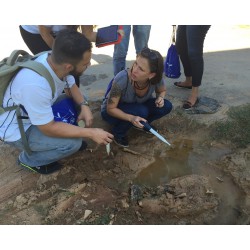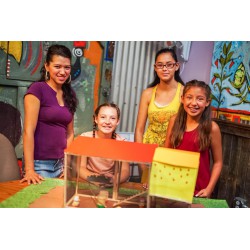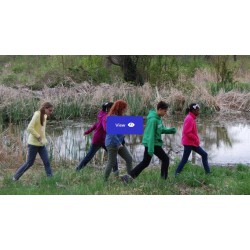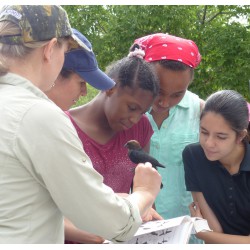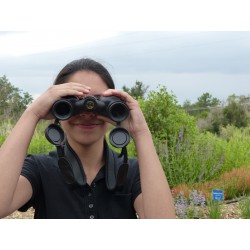Sort
New items
-

Speculative Stories
In this flexible activity patrons imagine future uses of AI tools, and...
-

Ethiquest
In this short activity patrons consider the ethical dilemmas posed by...
-

Data Bites
Patrons create a paper supervised learning machine, and use it to sort...
Biology There are 47 items.
-
Pressing Plants
Collect and preserve a plant, much like researchers have done for hundreds of years for identification, research, and education. 0
Check It Out
-
Bug Hunting
Go outside and investigate different types of bugs, then see if you can classify them. 0
Check It Out
Family Take-home Activity A take-home that can be sent with patrons that wish to do STEM activities at home. These at-home activities cover similar topic areas as the associated activity and could be handed out at the conclusion of a program or left on a circulation desk for patrons to take home. -
Pond Dipping
Go outside and collect creatures from a pond. After making observations, return the creatures to their home. 0
Check It Out
-
Bird Feeders
Create a simple bird feeder for families to take home and observe bird species in their backyards. 0
Check It Out
Family Take-home Activity A take-home that can be sent with patrons that wish to do STEM activities at home. These at-home activities cover similar topic areas as the associated activity and could be handed out at the conclusion of a program or left on a circulation desk for patrons to take home. -
GLOBE Observer: Mosquito Habitats
This citizen science toolkit of resources and activities will support your library in mapping and collecting data about mosquito habitats in your area. 0
Check It Out
-
Fermentation in a Bag
In this simple experiment, patrons investigate the process of fermentation in ziplock bags with bakers yeast, warm water, and various sources of plant sugar. 0
Check It Out
How-to Video -
Una Buena Amargura
A algunas personas les gusta el brócoli, otras lo detestan. ¡Debe haber una razón científica! Las verduras crucíferas contienen compuestos amargos llamados glucosinolatos. Ciertos genes humanos determinan si una persona puede degustar este amargor. Para probar esto, los científicos usan la PTC (feniltiocarbamida), un compuesto artificial similar a los... 0
Check It Out
-
Hogar Dulce Hogar
Un hábitat es el hogar o entorno natural de una planta, un animal u otro organismo. Un hábitat proporciona a un animal alimento, agua y un lugar para vivir. A veces los animales no pueden vivir en sus hábitats naturales, y los humanos deben construir hábitats para ellos. Para satisfacer las necesidades de los animales, las personas intentan imitar sus... 0
Check It Out
-
Humedal Musical
Los sapos y las ranas se encuentran entre sí llamándose y cada especie tiene un llamado único. Ellos usan estos llamados durante la época de apareamiento para encontrar una pareja. La mayoría de los sapos y ranas llaman durante la noche cuando están protegidos del sol y pueden esconderse de sus depredadores. 0
Check It Out
-
Birds and Blooms: Recycled Bird Feeders
Patrons learn about what birds need to survive and construct their own bird feeder! 0
Check It Out
-
Ave es la Clave
Las aves son unos animales fascinantes de observar y es fácil aprender a identificarlos. Los observadores casuales pueden utilizar las mismas técnicas para identificar aves que usan los científicos. Puedes ayudar a los científicos a monitorizar las poblaciones de aves y buscar patrones en su movimiento al contar tus aves locales y presentar la información. 0
Check It Out
-
Imaginary River Trip
Participants learn about how plants, animals, and humans need water to survive by going on an imaginary river trip narrated by the facilitator. A link to the activity’s PowerPoint slides can be found below in the “related links” section. 0
Check It Out







